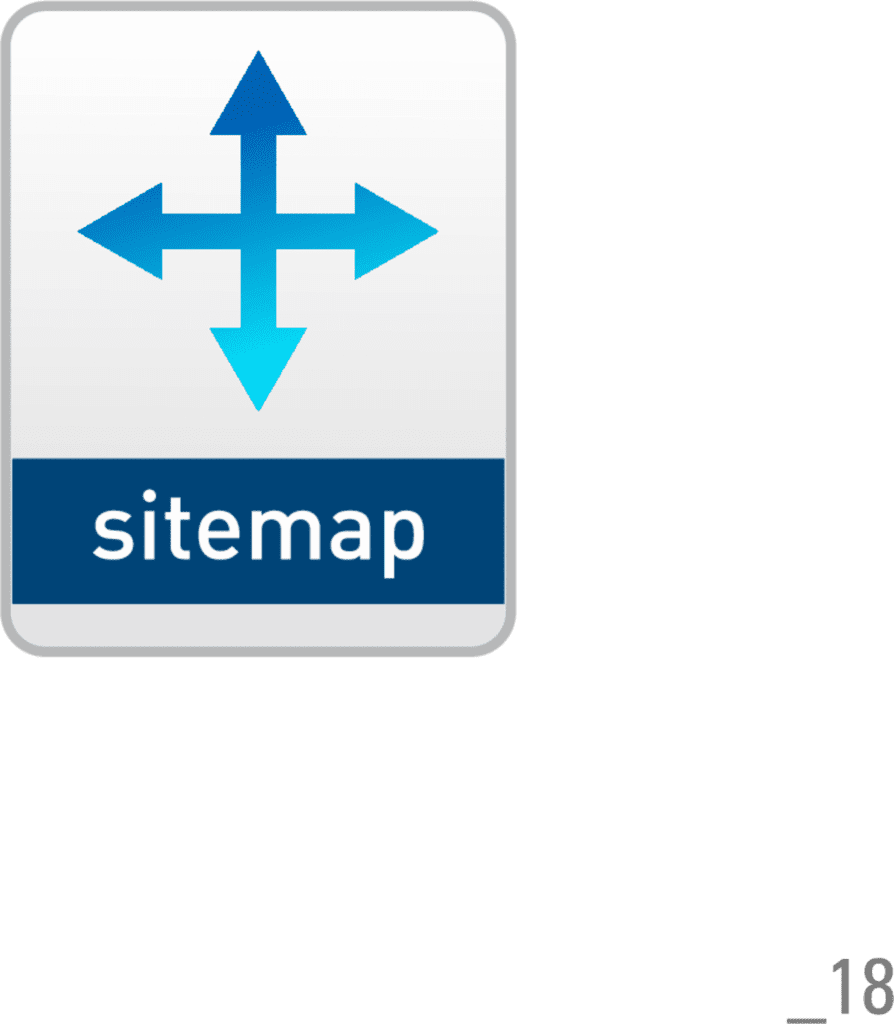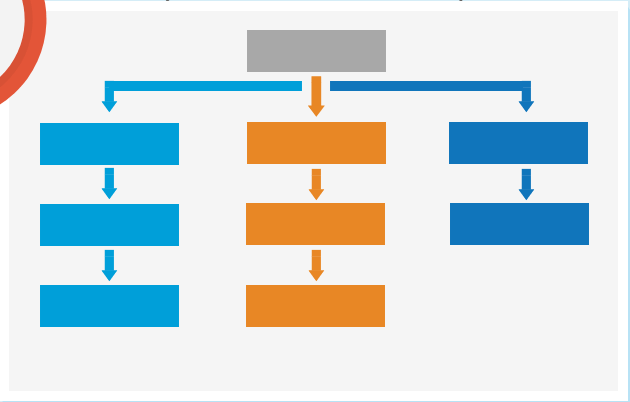
Table of Contents
In the vast landscape of the internet, websites serve as digital hubs for information, services, and interactions. Navigating through the intricate web of web pages can sometimes feel like embarking on a journey without a map. This is where site maps come into play – they act as the guiding compass, providing users and search engines with a structured layout of a website’s content. In this comprehensive overview, we delve into the intricacies of site maps, exploring their purpose, types, benefits, and best practices.
What is a Site Map?
A site map, also known as a sitemap, is a hierarchical list or diagram of all the pages within a website. It serves as a blueprint that outlines the structure and organization of a website’s content, including individual web pages, sections, and links between them. Think of it as a bird’s eye view of the entire website, offering users and search engine crawlers a clear understanding of its layout and navigation paths.What Is Sitemap 2024
. Types of Site Maps
There are primarily two types of site maps:
a. HTML Site Maps: These are designed for human users and are typically accessible through a webpage on the site. HTML site maps are structured in a user-friendly format, often resembling a table of contents, with clickable links leading to different sections and pages of the website.
b. XML Site Maps: XML (Extensible Markup Language) site maps are intended for search engines rather than human users. They provide a machine-readable list of URLs within a website, along with additional metadata such as when the page was last updated and how important it is in relation to other pages on the site. XML site maps help search engine crawlers index the website more efficiently, leading to better visibility in search engine results.
Benefits of Site Maps:
What Is Sitemap
Site maps offer numerous benefits for both users and website owners:
Improved User Experience: By providing a clear overview of the website’s structure, site maps help users navigate more efficiently, reducing frustration and enhancing user satisfaction.
Enhanced SEO Performance: XML site maps aid search engine crawlers in discovering and indexing website content, leading to better search engine visibility and higher rankings in search results.
Facilitated Website Maintenance: Site maps make it easier for website owners to identify and address issues such as broken links or missing pages, thereby improving overall website quality and performance.
Support for Accessibility: Site maps can assist users with disabilities or impairments by offering alternative navigation options and ensuring equal access to website content.What Is Sitemap 2024
Best Practices for Site Maps

To maximize the effectiveness of site maps, consider the following best practices:
Keep it Updated: Regularly update your site map to reflect any changes or additions to your website’s content.
Ensure Accessibility: Make sure your site map is easily accessible to users, either through a dedicated webpage or a link in the footer/navigation menu.
use Descriptive Labels: Use clear and descriptive labels for links in your site map to help users understand the content and purpose of each page.
Prioritize Pages: If your website contains a large number of pages, consider prioritizing them in the site map based on importance or relevance.
Submit XML Site Maps to Search Engines: Submit your XML site map to major search engines such as Google and Bing using their webmaster tools to ensure thorough indexing of your website.
In conclusion, site maps play a crucial role in enhancing the usability, visibility, and maintenance of websites. By providing users and search engines with a structured overview of a website’s content, site maps empower users to navigate with ease and enable search engines to index website content more effectively. Incorporating site maps into your website strategy can lead to improved user experiences, higher search engine rankings, and overall better performance in the digital landscape.What Is Sitemap 2024
Site Map Generation Techniques
Creating a site map involves various techniques depending on the size and complexity of the website. Some common methods include:What Is Sitemap 2024
Manual Creation: For smaller websites, manually creating a site map using text editors or website building platforms is a feasible option. Website owners can list all the pages and organize them hierarchically based on their relationships.
Automated Tools: Numerous online tools and software applications are available to automate the site map generation process. These tools crawl through the website, extract links, and generate site maps in HTML or XML format. Popular tools include Screaming Frog, XML Sitemaps, and Yoast SEO plugin for WordPress.
Content Management Systems (CMS): Many CMS platforms offer built-in features or plugins/extensions for generating site maps. Users can configure settings and options within the CMS dashboard to automatically generate and update site maps whenever changes are made to the website’s content.
Third-Party Services: Some web hosting providers or SEO agencies offer site map generation services as part of their package. These services may include comprehensive site audits, optimization recommendations, and ongoing monitoring to ensure site maps remain up-to-date and effective.
Evolving Trends in Site Mapping
As technology and user behavior continue to evolve, site mapping practices are also adapting to meet new challenges and opportunities. Some emerging trends in site mapping include:
Mobile-First Indexing: With the increasing prevalence of mobile devices, optimizing site maps for mobile-first indexing has become essential. This involves prioritizing mobile-friendly design and ensuring that site maps accurately reflect the mobile browsing experience.
Voice Search Optimization: As voice search becomes more prevalent, site maps need to accommodate natural language queries and conversational search patterns. This may involve incorporating long-tail keywords and structuring content in a way that aligns with common voice search queries.
Dynamic Site Maps: Rather than static site maps that list all pages upfront, dynamic site maps adapt to user preferences and behavior in real-time. These site maps may incorporate personalized recommendations, contextual links, and AI-driven algorithms to enhance user engagement and navigation.
Visual Site Mapping Tools: Visual site mapping tools offer intuitive interfaces for designing and visualizing website structures. These tools often feature drag-and-drop functionality, interactive diagrams, and collaboration features to streamline the site mapping process and facilitate team collaboration.
Case Studies

Examining real-world examples can provide valuable insights into the effectiveness of site maps in different contexts. Here are a few case studies highlighting successful site mapping strategies:
E-commerce Website: By implementing a comprehensive site map with clear navigation pathways, an e-commerce website increased user engagement and conversion rates. The site map helped users discover relevant products more easily, leading to a significant improvement in sales and revenue.
Educational Institution: A university revamped its website’s site map to better organize academic programs, departments, and resources. The new site map improved student navigation and information access, resulting in higher student satisfaction and retention rates.What Is Sitemap 2024
Corporate Intranet: A large corporation redesigned its intranet site map to streamline access to internal documents, policies, and communication channels. The updated site map enhanced employee productivity and collaboration, leading to measurable gains in operational efficiency and workflow management.
Conclusion: In conclusion, site maps serve as invaluable tools for organizing, navigating, and optimizing websites in the digital landscape. By providing users and search engines with clear structures and pathways, site maps enhance user experiences, improve search engine visibility, and facilitate website maintenance. Incorporating site maps into website strategies and staying abreast of
evolving trends and best practices can empower businesses and organizations to succeed in an ever-changing online environment. From manual creation to automated tools and emerging technologies, the journey of site mapping continues to evolve, shaping the future of digital experiences and information architecture.
Challenges and Considerations in Site Mapping
Despite the benefits of site mapping, website owners may encounter challenges and considerations that require careful attention:
Content Overload: Websites with extensive content may face challenges in effectively organizing and presenting information within the site map. Balancing comprehensiveness with clarity is crucial to prevent overwhelming users with too much information.
Dynamic Content: Websites featuring dynamic or user-generated content may find it challenging to maintain an accurate and up-to-date site map. Strategies such as automated content updates and periodic site map audits can help address this issue.
Multilingual Websites: For websites catering to a global audience with multiple languages, creating site maps that accommodate
language variations and cultural preferences can be complex. Implementing language-specific site maps and hreflang tags can enhance international SEO and user experience.What Is Sitemap 2024
Accessibility Compliance: Ensuring that site maps are accessible to users with disabilities is essential for inclusive web design. Site
maps should adhere to accessibility standards such as WCAG (Web Content Accessibility Guidelines) to accommodate users with visual, auditory, or motor impairments.What Is Sitemap 2024
Navigational Design: Designing intuitive navigation pathways within the site map requires careful consideration of user needs and behaviors. User testing and feedback can help identify usability issues and refine navigation structures for optimal user experience.
What Is Sitemap 2024
Integration with Analytics: Integrating site maps with web analytics tools enables website owners to track user interactions, identify popular pathways, and optimize site map structures based on user behavior data. This data-driven approach can inform strategic decisions and improve overall website performance.
Future Directions in Site Mapping:
Looking ahead, site mapping is poised to evolve in response to emerging technologies and shifting user expectations:
AI-Powered Recommendations: Artificial intelligence (AI) algorithms can analyze user behavior patterns and preferences to generate personalized recommendations within site maps. By surfacing relevant content and products, AI-driven site maps enhance user engagement and conversion rates.What Is Sitemap 2024
Augmented Reality (AR) Integration: AR technology enables immersive experiences that overlay digital information onto the physical environment. Site maps enhanced with AR features can guide users in real-world settings, such as navigating indoor spaces or exploring tourist destinations.What Is Sitemap 2024
Blockchain-Based Navigation: Blockchain technology offers decentralized and tamper-resistant data storage solutions. By leveraging blockchain for site map navigation, users can access verified and trustworthy information without relying on centralized authorities or intermediaries.What Is Sitemap 2024

Voice-Activated Site Maps: Voice-enabled site maps leverage natural language processing (NLP) to interpret voice commands and provide spoken responses. This hands-free navigation option caters to users who prefer voice search and interaction, particularly in mobile and smart speaker contexts.What Is Sitemap 2024
Spatial Site Mapping: Spatial computing technologies such as virtual reality (VR) and mixed reality (MR) enable three-dimensional representations of digital spaces. Spatial site maps immerse users in interactive environments, allowing for intuitive exploration and navigation of complex structures.What Is Sitemap 2024
In conclusion, site mapping remains a fundamental aspect of website design and optimization, serving as a navigational blueprint for users and search engines alike. Despite the challenges and considerations involved, site mapping offers numerous benefits for enhancing user experiences, improving search engine visibility, and facilitating website management. As technology continues to
advance and user behaviors evolve, the future of site mapping holds exciting possibilities, from AI-driven recommendations to immersive AR experiences. By staying informed about emerging trends and embracing innovative approaches, website owners can harness the full potential of site mapping to create engaging, accessible, and user-centric digital experiences.
The Importance of Site Mapping in Information Architecture:
Information architecture (IA) encompasses the organization, structure, and labeling of content within a digital environment to facilitate user understanding and navigation. Site mapping plays a central role in IA by visually representing the relationships between different components of a website. Effective information architecture ensures that users can easily locate and access relevant content, leading to enhanced usability and user satisfaction.What Is Sitemap 2024
What Is Sitemap 2024
Hierarchical Organization: Site maps use hierarchical structures to organize website content into logical categories and subcategories. This hierarchical approach mirrors how users mentally conceptualize information, allowing them to navigate through the website in a manner that aligns with their mental models.
What Is Sitemap 2024
Clear Navigation Pathways: By delineating the pathways between different sections and pages of the website, site maps provide users with clear navigation cues. Intuitive navigation pathways reduce cognitive load and enable users to find information quickly and efficiently.What Is Sitemap 2024
Content Discoverability: Site maps improve content discoverability by ensuring that all pages are accessible within a few clicks. Users can explore different sections of the website without feeling lost or overwhelmed, leading to increased engagement and prolonged browsing sessions.
Cross-Linking Opportunities: Site maps facilitate cross-linking between related pages, allowing users to seamlessly navigate between different sections of the website. Cross-linking enhances user exploration and discovery, encouraging deeper engagement with the website’s content.
Scalability and Flexibility: As websites grow and evolve over time, site maps provide a scalable framework for accommodating new content and organizational changes. Website owners can easily update and expand the site map to reflect changes in content structure or user needs.What Is Sitemap 2024
User-Centric Design: Site mapping adopts a user-centric approach to information architecture, prioritizing the needs and preferences of the target audience. By aligning the site map with user goals and tasks, website owners can create intuitive and user-friendly navigation experiences. What Is Sitemap 2024
Site Mapping in UX Design What Is Sitemap 2024
User experience (UX) design focuses on creating intuitive and seamless interactions between users and digital products or services. Site mapping is an essential tool in UX design, enabling designers to optimize website navigation and layout for maximum usability and satisfaction.
User Journey Mapping: Site maps help UX designers visualize the user journey through the website, from the initial landing page to the desired destination. By mapping out the user journey, designers can identify pain points and opportunities for improvement in the navigation flow.
Wireframing and Prototyping: Site maps serve as the foundation for wireframing and prototyping, allowing designers to create low-fidelity representations of website layouts and interactions. Wireframes and prototypes based on site maps provide stakeholders with a clear understanding of the website’s structure and functionality.What Is Sitemap 2024
What Is Sitemap 2024
Iterative Design Process: Site mapping supports an iterative design process, where designers can test and refine navigation structures based on user feedback and usability testing. Iterative design ensures that the website’s navigation remains aligned with user needs and preferences throughout the design and development process.
Responsive Design Considerations: With the proliferation of mobile devices, responsive design has become essential for ensuring a consistent user experience across different screen sizes and devices. Site maps help designers plan for responsive layouts and navigation patterns that adapt seamlessly to various viewing contexts.
Site Mapping for SEO Optimization What Is Sitemap 2024
Search engine optimization (SEO) aims to improve a website’s visibility and ranking in search engine results pages (SERPs). Site mapping plays a crucial role in SEO optimization by providing search engine crawlers with clear pathways to discover and index website content.
XML Sitemaps for Crawling: XML site maps provide search engine crawlers with a comprehensive list of URLs within a website, along with metadata such as priority and last modified date. Submitting XML site maps to search engines ensures that all pages are crawled and indexed efficiently, leading to better search engine visibility.What Is Sitemap 2024
Internal Linking Structure: Site maps inform the internal linking structure of the website, which plays a significant role in SEO. By strategically linking between related pages, website owners can distribute link equity and prioritize important pages for indexing and ranking.
Keyword Mapping: Site maps can be used to map keywords to specific pages within the website, helping to optimize individual pages for relevant search queries. Keyword-rich anchor text in site map links can improve the visibility of target keywords and enhance the website’s relevance in search engine results. What Is Sitemap 2024
Canonicalization and Redirect Mapping: Site maps assist in managing canonicalization issues and redirect mapping, ensuring that search engines attribute the correct canonical URLs and follow redirects appropriately. Clear site map structures help search engine crawlers understand the preferred URL structure and avoid indexing duplicate or outdated content.What Is Sitemap 2024
Conclusion:
In conclusion, site mapping is a fundamental aspect of information architecture, UX design, and SEO optimization, serving as a visual blueprint for organizing website content and facilitating user What Is Sitemap 2024
navigation. By adopting a user-centric approach to site mapping, website owners and designers can create intuitive, seamless, and
discoverable digital experiences that meet the needs and expectations of their target audience. Whether it’s organizing content hierarchically, optimizing navigation pathways, or improving search engine visibility, site mapping plays a pivotal role in shaping the user experience and driving the success of websites in the digital landscape. As technology continues to evolve and user behaviors
evolve, the importance of site mapping will only continue to grow, guiding the way towards more intuitive, accessible, and engaging digital environments.



